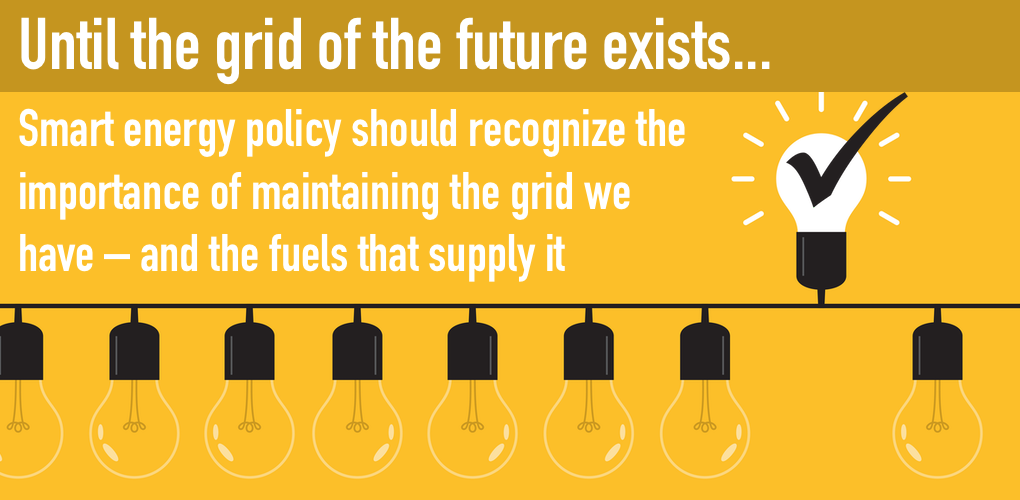
A Responsible Energy Transition Can’t Mean Energy Shocks
The word “transition” suggests a measured, thoughtful change, not a jump cut. That’s why the energy “transition” proposed in the reconciliation package doesn’t feel like a transition at all. It’s an upending of the nation’s energy mix and the jobs that support millions of families.
As the global energy crisis deepens, it’s increasingly clear that a responsible transition that doesn’t jeopardize energy affordability and reliability requires careful planning. Yet, an accelerated transition – without any apparent guardrails or reliability off-ramps – would appear to be exactly what American consumers could get. Crushing costs in Europe and Asia and mounting fuel security challenges are important reminders of the gravity of policy decisions. In other words, we have an opportunity for informed planning, and there is no excuse for our next steps to be missteps.
The warnings are getting louder. Take Amos Hochstein, the nation’s top energy diplomat, who has been outspoken about gas supply constraints and fuel security concerns in Europe this winter. He told Bloomberg, the transition isn’t a “flick of the switch,” adding, “If we want to solve climate change we need to do so while at the same time insulating the global economy from extreme energy shocks.”
And of course, we’re now right in the midst of an economy-halting energy shock that is bringing Europe to its knees, requiring emergency action in Asia and threatening to slam American consumers this winter. While the situation is certainly better in the U.S., it’s a headwind to economic recovery no one wants to see grow stronger. As the Wall Street Journal observed, crude oil has risen 64% this year, heating oil has risen 68% this year and natural gas prices have doubled in just six months to a seven-year high. Coal demand and prices have jumped as well.
Economists say higher energy prices could push up inflation, depress consumer spending on other products and services, and throttle recovery. “For consumers it’s like a tax,” economist Kathy Bostjancic of Oxford Economics told the Journal.
The U.S. Energy Information Administration’s (EIA) winter fuels outlook provides an unsettling preview of that “tax.” The EIA expects households to spend considerably more on energy this winter, with soaring natural gas, heating oil and propane prices driving cost increases. The cost of electricity across the country is rising across the board but nowhere more so than in the Northeast which has gone all in on natural gas and is now quite literally paying the price.
Towards Imbalance and Price Volatility
While the causes of today’s global energy crisis are diverse and regionally nuanced, the collision of rapidly rising energy demand with under investment in traditional fuels is largely to blame.
Supply constraints are increasingly becoming a troubling dimension of a poorly managed transition where government policy and investor pressure are proving far more adept at curtailing supply of the fuels the world needs than scaling up the new zero-emission technologies and infrastructure needed to take their place. As Bloomberg’s chief energy correspondent observed, “that’s created an imbalance, as well as volatile prices.”
Consider what’s happening with coal. Despite relentless pressure to close plants and curtail lending to miners, global coal demand is soaring and coal plants from Germany to the U.S., India and China can barely get enough supply. A painfully tight market for natural gas and underperforming renewable capacity has meant the fuel security and optionality provided by coal is firmly in demand.
In the U.S., coal demand is expected to rebound 23% this year. As Rich Nolan, president and CEO of the National Mining Association told Bloomberg, “The markets have spoken. We’re seeing the essential nature of coal come roaring back.”
China – which consumes and produces more coal than the rest of the world combined – just announced it’s even rethinking its approach to the energy transition. China’s Premier, Li Keqiang, called for an end to the “indiscriminate approach” taken by some Chinese regions to limiting electricity supplies and coal output, as well as “campaign-style” efforts to cut carbon emissions. “Energy security should be the premise on which a modern energy system is built, and the capacity for energy self-supply should be enhanced,” he said.
China’s pivot is an important reminder that the fight against rising emissions is a global one. While some European and American policymakers are determined to double down on hawkish climate policies – even considering the ongoing energy crunch – price spikes, price volatility and soaring consumer impacts are not a replicable or sane path forward.
While it’s important to continue to drive the deployment of emissions-free technology, smart policy will recognize the importance of maintaining the grid we have – and the fuels that supply it – until the grid of the future exists. Policy-driven under investment that constrains new coal, oil or natural gas production will make price volatility and extreme energy shocks an all-too-common feature of the road ahead. That’s a recipe to derail economic recovery and dismantle voter support for decarbonization. A thoughtful, responsible and measured transition is the right path to take. Now’s the moment to choose it.
- On October 13, 2021
